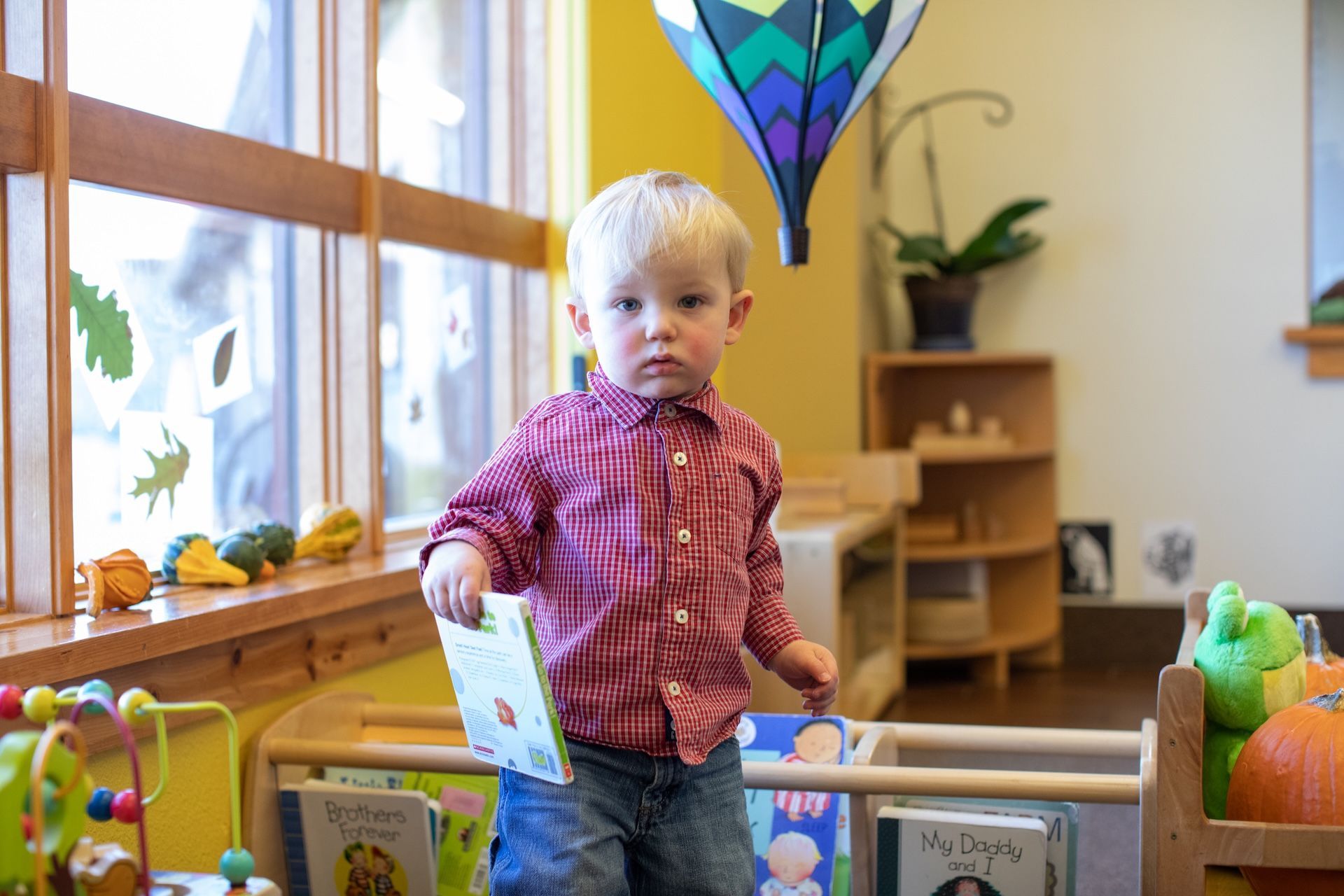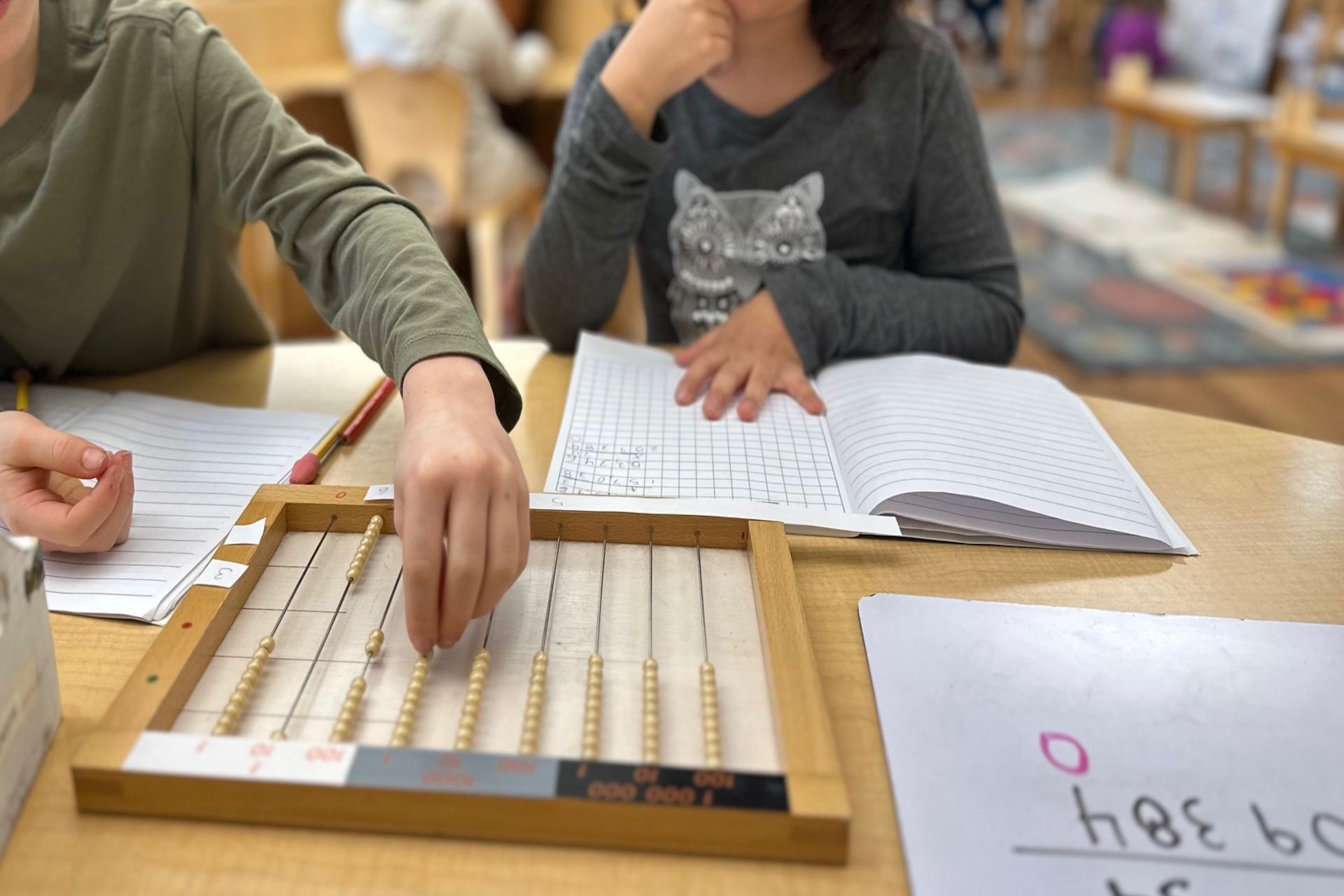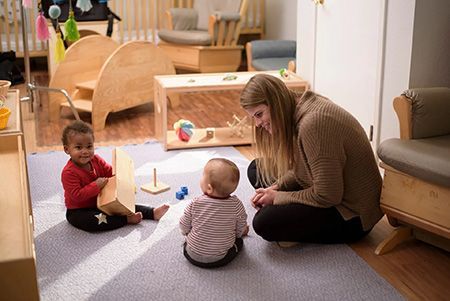The Real Secrets to Raising Readers
Nurture a lifelong love of reading with Montessori-inspired tips that balance screen time, model good habits, and make books part of everyday life.

In this intense era of screens, our children’s connection to books can feel more elusive. We want our children to love reading, but this hope is often mixed with some frustration. Coaxing, reminding, begging, bribing: these may seem like ways to fix the problem. But they tend not to create a long-term love of reading.
So what are the secrets to getting children to read more books?
In Montessori, we try to look at ourselves first to determine what we can shift within ourselves and in our children’s environment. Here are two helpful questions to ask in this process:
Do we limit our children’s access to electronic entertainment?
Do our children see us reading at home?
These are two of the most powerful secrets to raising children who love to read.
The Role of the Environment and Example Setting
When many of us were growing up, screens weren’t constantly competing for our attention. Television hours were limited, and when friends weren’t around, we often turned to books. Getting lost in a story was both exciting and deeply satisfying.
For many of us, those early experiences shaped not only our imaginations but also our academic lives, as the habit of reading can make schoolwork and later studies easier and more enjoyable.
Today, we face new challenges with our children. Setting limits on screens takes real effort, and finding time to model reading can feel nearly impossible. Yet these two factors—limits and example setting—remain essential.
Boundaries Around Screens
Setting limits isn’t only about how much time children spend with electronic devices, but also where they use them. When devices are used in private spaces, they become part of a child’s daily rhythm in a way that’s hard to monitor and even harder to moderate. Keeping electronics in common areas makes it easier to create balance and accountability.
Of course, sometimes limiting screen use simply doesn’t feel practical. There are times we need quiet. We have housework that needs to get done. We may feel like it’s easier when our children are occupied with an electronic distraction. However, in those moments, it can help to think about our priorities: Would a little more noise or clutter in the living room be worth the trade-off of better balance for our child? Sometimes short-term inconveniences create long-term growth.
Why Limits Matter
Creating limits teaches children far more than when to turn off a screen. It teaches them about moderation, balance, and boundaries, the very skills they’ll need as independent, responsible adults.
When we give in to tantrums or constant demands for entertainment, children learn that persistence in protest leads to results. They are hard-wired to test limits because that's how they find out where those limits are. Our job is to stay steady, calm, and consistent. Children actually find comfort in knowing that the adult is in charge of the boundary.
Read With Them
In addition to setting boundaries for electronic use, another critical step is making reading a part of daily life. If we want our children to read more, a first step is to read to them, even when they’re capable of reading on their own.
- For young children, make story time a daily ritual.
- For older children, share interesting news articles, recipes, or stories from your day.
- Create a quiet, well-lit reading nook in your home.
- Designate “screen-free” times in the evening when everyone (adults included!) reads.
When children see us reading, it normalizes the habit. It communicates the message that reading isn’t just for assignments or school, but rather is part of a full, rich life. Children who grow up surrounded by books and readers begin to see reading as something enjoyable and deeply human.
In the end, the “secrets” to raising readers aren’t really secrets at all. They’re about creating an environment that invites curiosity, setting limits that protect attention, and modeling the joy of learning every single day.
Come visit us here in Austin, Texas to see how we help make reading a joyful experience for children!










